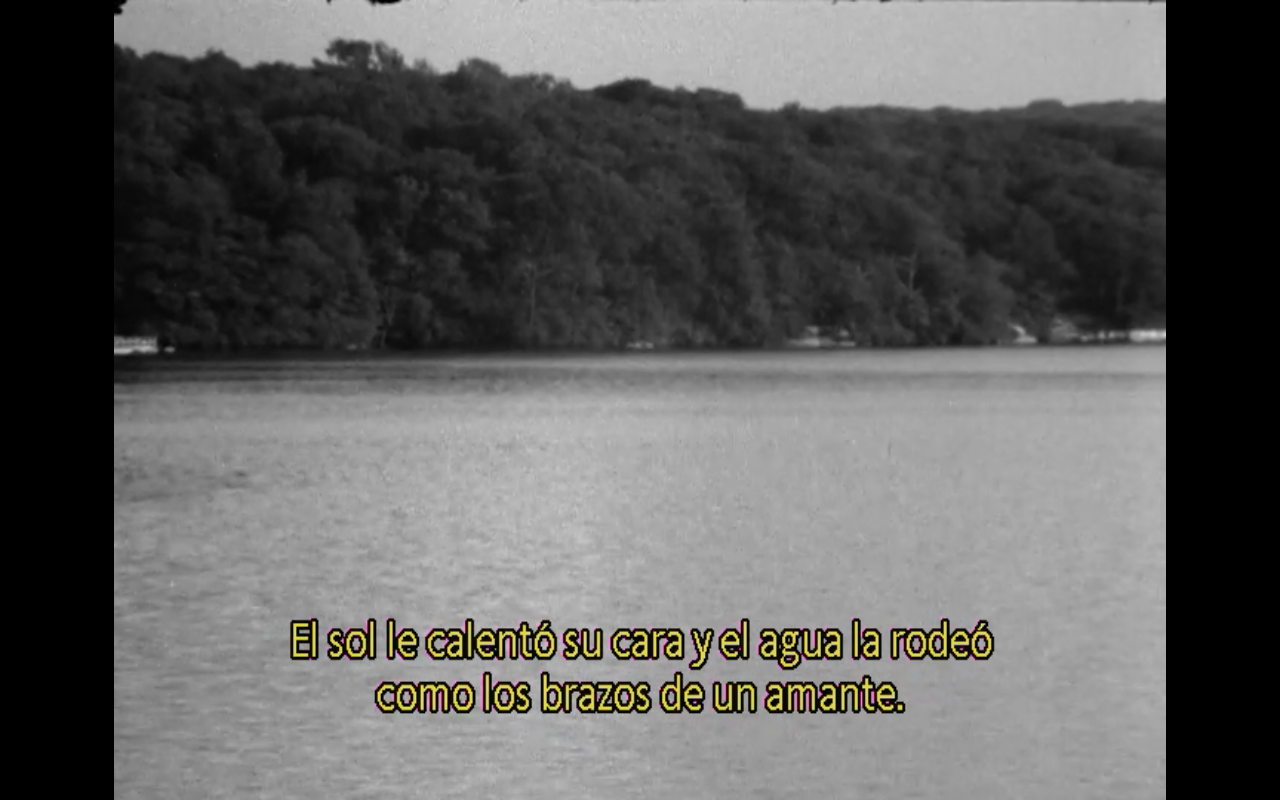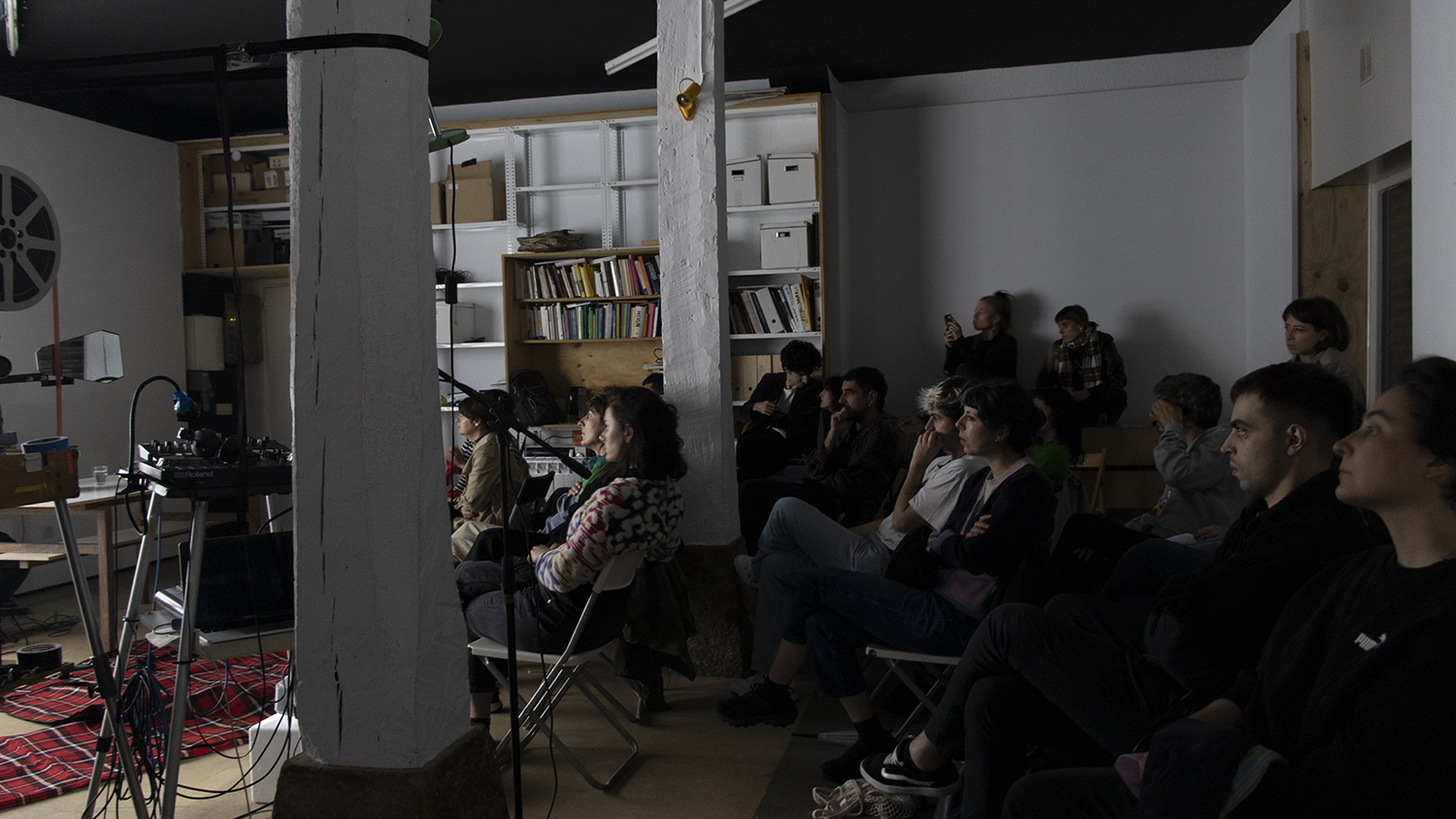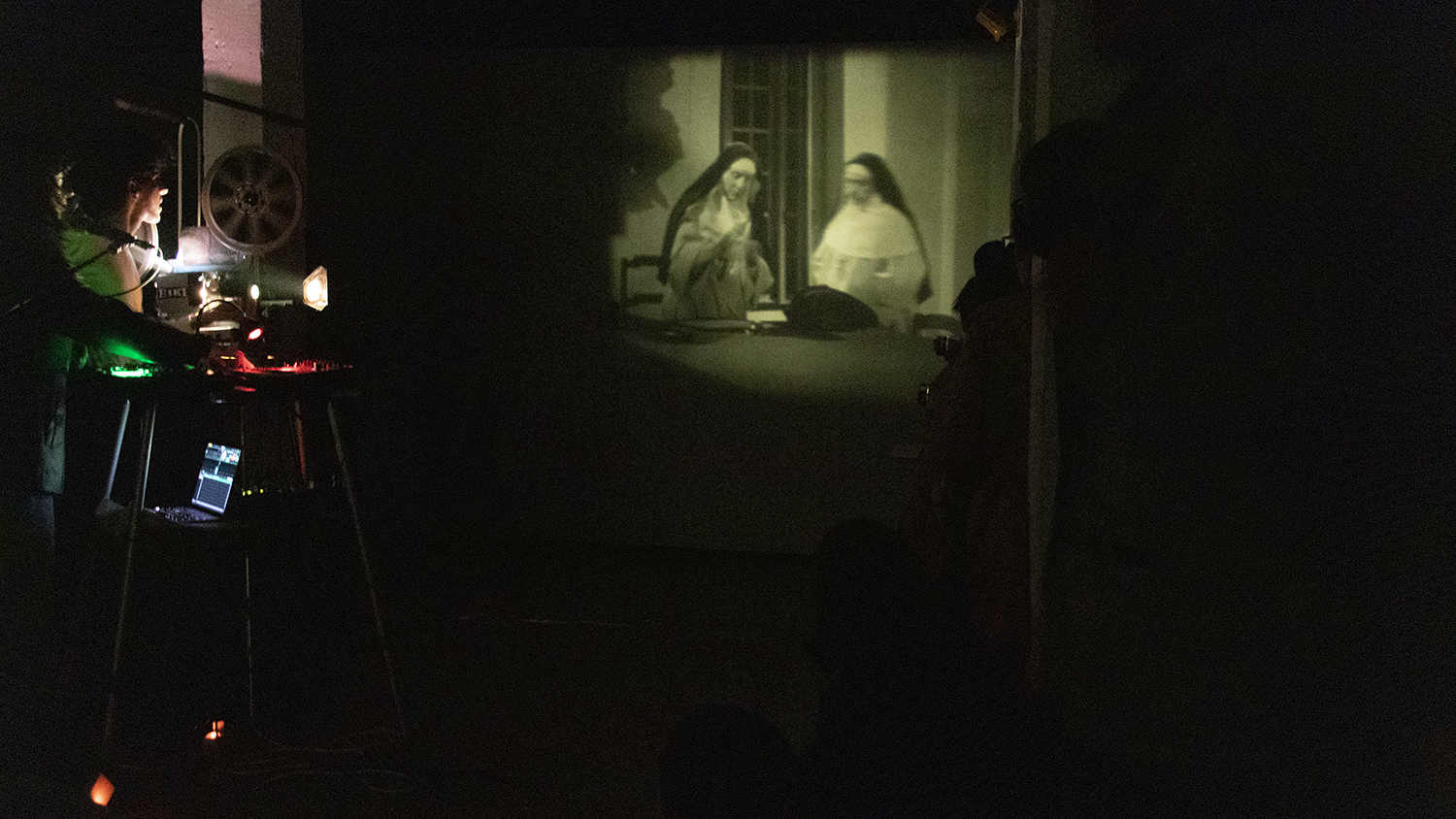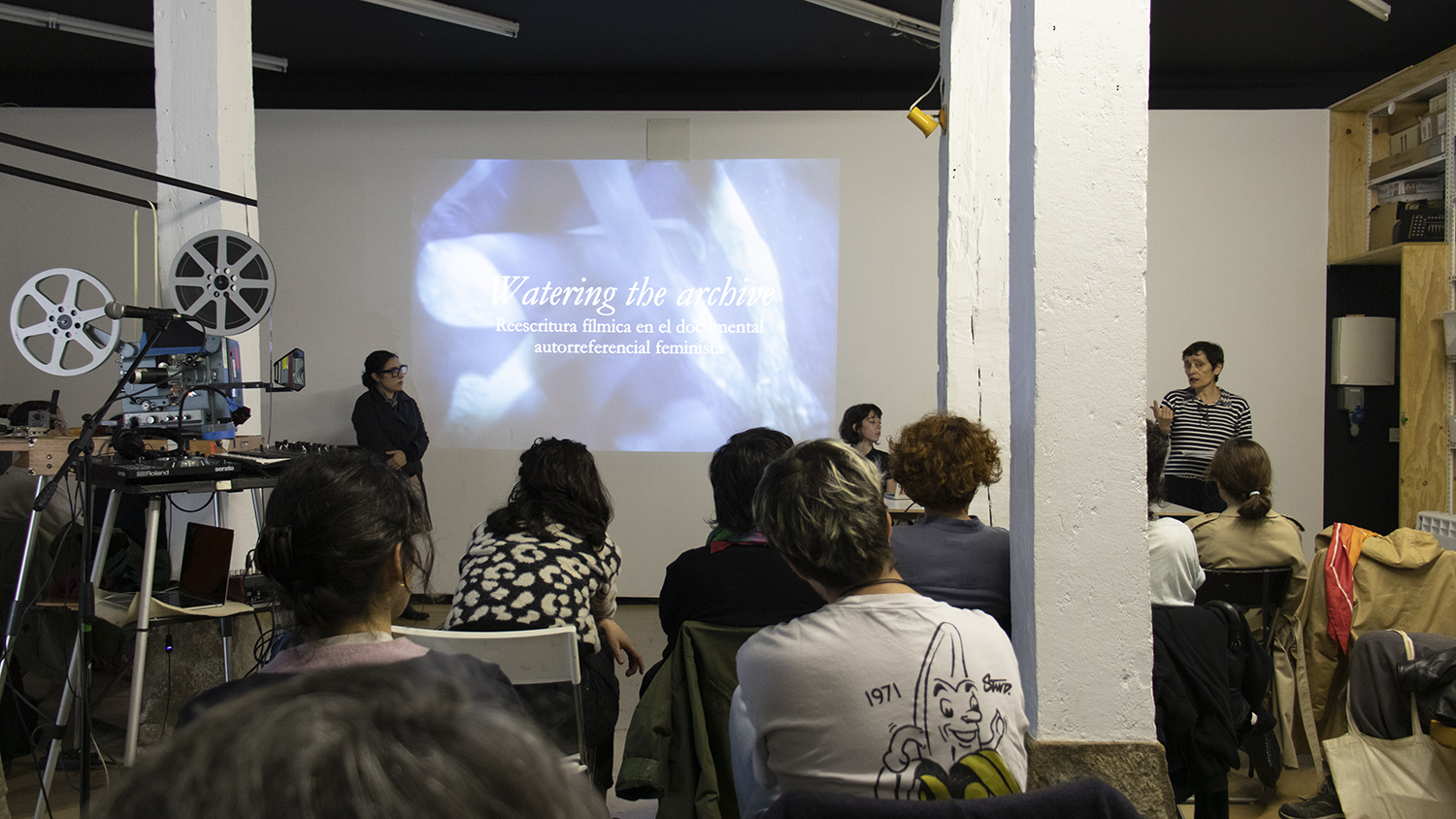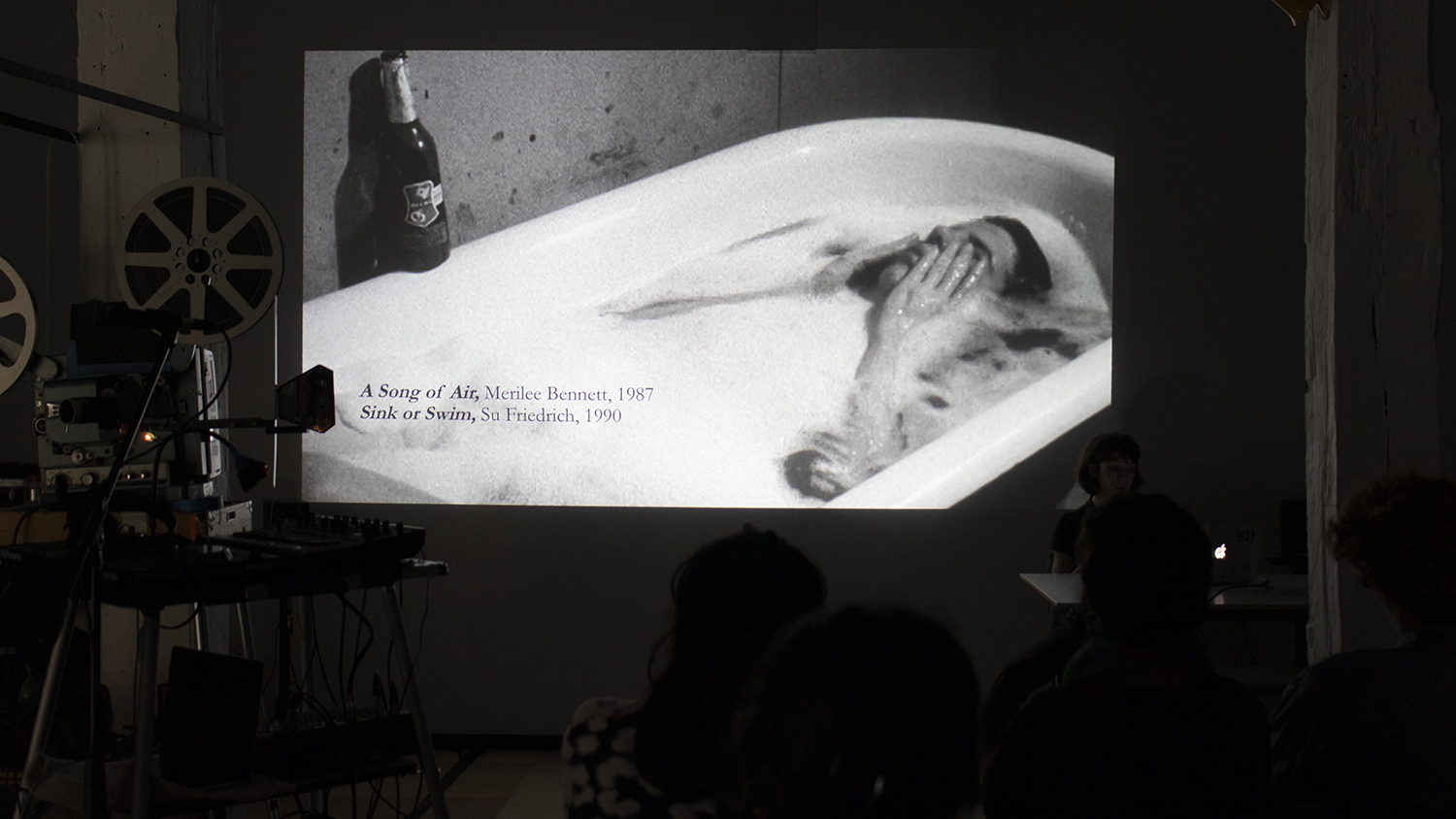Forms of formless knowledge
SHEDDING LIGHT. WORKING WITH FILM ARCHIVES
by
Shedding light is a space for thought and reflection on working with film archives through a series of case studies. The meeting proposes an immersion in a type of material that is presumed to have the stable character of a document. However, the plastic quality of the film material also makes it susceptible to being continuously reedited, manipulated, fragmented, erased, appropriated, reactivated and reinterpreted. The questions that frame this meeting include the following two: What is the potential of working with film archives – living and sensitive material – for producing new readings of the past? And to what extent are these readings affected by the material nature and the conditions of conservation, filing, circulation and reproduction of these archives?
JULIA MARTOS: WATERING THE ARCHIVE
A cascade falls on a body that bears it. This body waiting for the image to continue is that of the daughter-editor. Throughout the history of experimental and documentary cinema, found footage has been used to explore the dialectical potential of working with incomplete and fragmentary images of the past. Watering the Archive proposes a journey through two key films in autobiographical feminist cinema that use domestic archives to reshape the patrilineal meaning of the story. Here, watering the archive – dissolving our images – means to dissect their structure, provoking the emergence of new meanings.
ERNESTO CALVO ÁLVAREZ: PROSCRIBED IMAGES
A tour through different cases of censorship and repression linked to cultural, literary and artistic fields in the 64 years of the “Cuban revolution”, establishing interconnections between the context of the island and the periods in which these conflicts developed. The presentation will consist in commentaries on audio-visual and textual archive materials that pivot around these aesthetic, cultural, ideological and political problems, evincing the connections between the past and present, history and current affairs.
LAS SYNERGYS: IL Y A UNE BRÈCHE DANS LA HAIE
There are ways of opening a gap in what is hidden from us without having recourse to pruning shears or to sticking one’s head through the leaves. In the extended cinema presentation Il y a une brèche dans la haie (There’s a gap in the hedge) the cut in the film reel, the image discarded in the editing, takes the form of a nunnery. The nunnery in cinema is a space that makes fictions possible. Its strength lies in imagining what is not shown. By doing so, we could say that we saw the tiger that sleeps on the other side of the hedge.
BIOS
Julia Martos (Córdoba) is a researcher, visual artist, and cinema and video art programmer. She completed her training in Film Programming and Curating at Birkbeck, University of London, in 2021, thanks to a Museum Management and Exhibition Curation Grant from the Botín Foundation. She is currently starting a new film project in the framework of the Azkuna Zentroa’s BABESTU Contemporary Creation Support 2023, while developing her doctoral thesis on processes of cinematographic rewriting carried out by Spanish filmmakers.
Ernesto Calvo Álvarez has an educational background in History (University of La Habana), visual cultures (University of Barcelona), contemporary art and culture (University of the Basque Country). He was a curator and director of the Museum of Contemporary Art and Design in Costa Rica, where he conceived and curated events on video creation, young art and problems of the visual arts in Central America, amongst other activities. He has taught and held workshops on different questions related to visual studies (cinema, video creation, photography, amongst others subjects) in universities in Costa Rica and artistic-cultural centres in Latin America, the USA and Spain.
Paula Guerrero and Bruno Delgado Ramo are Las Synergys. They investigate the connections between cinema and music, carrying out expanded format projections where the film moves around the space, the image is subjected to interventions, and the sound is mixed with music by means of DJing logics and the use of synthesizers. They have shown their work in contexts such as: Punto de Vista, (S8) Mostra, Espacio Tangente, amongst others. Through the Gabinete kino-okno project they program sessions of experimental cinema, organize meetings around the material and performative practice of cinema and edit the Afiches del Gabinete.

